Papers by Stijn Goolaerts
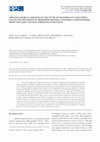
RIVISTA ITALIANA DI PALEONTOLOGIA E STRATIGRAFIA
The application of high-resolution X-ray computed tomography permits an appraisal of historically... more The application of high-resolution X-ray computed tomography permits an appraisal of historically and newly collected specimens of Belosaepia (Belosaepiidae, Coleoidea, Cephalopoda) from the Ypresian (Early Eocene) of Belgium and provides resolution into the taxonomy of stem-group sepiids. The new finds are from the basal beds of the Egemkapel Clay Member (Tielt Formation) in the Ampe claypit at Egem and in the middle of the Roubaix Clay Member (Kortrijk Formation) in the Koekelberg claypit at Marke (province of West-Flanders, Belgium). Combining the historically and newly collected material allows us to conclude that only a single species can be positively identified, namely Belosaepia tricarinata (Watelet, 1851), and that all currently documented occurrences are restricted to the middle Ypresian (NP11-NP12). This seems to correspond well with the occurrence of Belosaepia tricarinata in the Paris, London, and Hampshire basins. Micro-CT imaging is an excellent, non-destructive tool ...

<p>Obtaining temperature data from the mid-Piacenzian warm period (mPWP) is... more <p>Obtaining temperature data from the mid-Piacenzian warm period (mPWP) is a key factor in understanding the coming changes brought upon by anthropogenic climate change. The mPWP, a high-CO<sub>2</sub> world with a paleogeography similar to modern times, has been used to validate and improve model retrodictions, which in turn enables assessing the prediction strength of these models<sup>1</sup>. For the first time, stable isotope analysis has been applied to the extinct tellinid bivalve <em>Angulus benedeni benedeni</em>, originating from the mid-Piacenzian of the Lillo Formation of Belgium in the southern North Sea basin. Multi-annual oxygen isotope records with a seasonal resolution obtained from its shell indicate that this species could live for up to a decade and formed monthly growth increments. From this oxygen isotope record, a clumped-isotope-based mean annual temperature of 12.6 ± 3.6°C was reconstructed. This is 2.1°C warmer than today<sup>2,3</sup>, 2.6°C warmer than the pre-industrial North Sea<sup>2</sup>, and in line with global Pliocene temperature estimates of +2-4°C compared to the pre-industrial climate<sup>4,5</sup>. The pristine nature of the aragonitic shell material was verified through electron backscatter diffraction analysis (EBSD), and backed up by light microscopy, X-ray diffraction, and X-ray fluorescence. The various microstructures as obtained from the EBSD maps have been described, and they provide a template of pristine <em>A. benedeni benedeni</em> material to which potentially altered shells may be compared. The bivalve <em>A. benedeni benedeni</em> is suitable for high resolution isotope-based paleoclimatic reconstruction and it can be used to unravel the marine conditions in the Pliocene North Sea basin at a seasonal scale, yielding enhanced insight into imminent western European climate conditions.</p><ul><li><sup>1</sup>Dowsett, H. J. <em>et al.</em> Assessing confidence in Pliocene sea surface temperatures to evaluate predictive models. <em>Nature Climate Change</em> <strong>2</strong>, 365–371 (2012). https://doi.org/10.1038/NCLIMATE1455</li> <li><sup>2</sup>Emeis, K.-C. <em>et al.</em> The North Sea — A shelf sea in the Anthropocene. <em>Journal of Marine Systems</em> <strong>141</strong>, 18–33 (2015). https://doi.org/10.1016/j.jmarsys.2014.03.012</li> <li><sup>3</sup>Locarnini, R. A. <em>et al.</em> World Ocean Atlas 2018, Volume 1: Temperature. <em>NOAA Atlas NESDIS 81. </em>A. Mishonov, Technical Editor. 52pp. (2019). https://www.ncei.noaa.gov/access/world-ocean-atlas-2018/</li> <li><sup>4</sup>Dowsett, H. J. <em>et al.</em> Sea surface temperature of the mid-Piacenzian ocean: a data-model comparison. <em>Scientific reports</em> <strong>3</strong>, 1–8 (2013). https://doi.org/10.1038/srep02013</li> <li><sup>5</sup>Haywood, A. M. <em>et al.</em> The Pliocene Model Intercomparison Project Phase 2: large-scale climate features and climate sensitivity. <em>Clim. Past</em> <strong>16</strong>, 2095–2123 (2020). https://doi.org/10.5194/cp-16-2095-2020</li> </ul>
FIG. 3.— Ammonites à morphologie suboxycône ou subplatycône involute provenant du niveau 96 moyen... more FIG. 3.— Ammonites à morphologie suboxycône ou subplatycône involute provenant du niveau 96 moyen de la coupe de Mandelot (Côte-d'Or France) (Sinémurien inférieur), chronozone à Semicostatum (sous-chronozone à Scipionianum ou à Sauzeanum) ou chro- nozone à Turneri. A-D, Oxyarietites boletzkyi n. gen., n. sp., holotype (UBGD 277446); D, interprétation graphique de la costulation. E, F, Oxyarietites? sp. (Man-96moy-001). Échelle: 2 cm.

FIG. 5.— Comparaison des lignes de suture d'Oxyarietites boletzkyi n. gen., n. sp. et de deux... more FIG. 5.— Comparaison des lignes de suture d'Oxyarietites boletzkyi n. gen., n. sp. et de deux espèces d'Agassiceras Hyatt, 1875: A, B, Oxyarietites boletzkyi n. gen., n. sp.: vue latérale (A) et vue déroulée (B) de l'holotype Mandelot (Côte-d'Or, France), niveau 96 moyen (UBGD 277446); C, Agassiceras cf. scipionianum (d'Orbigny, 1844), vue latérale, Saint-Jérôme (Ain, France), niveau 75 (STJ- 001); D, A. nodulatum (Buckman, 1921) vue latérale de la ligne de suture de holotype, modifiée d'après Buckman (1921: pl. 221), Newtown (Somerset, Grande Bretagne). Une ligne pointillée passant par la protoconche et le point d'intersection entre la ligne de suture et la suture ombilicale est indiquée pour permettre d'orienter la ligne de suture de chaque spécimen. Abréviations: LS, lobe suspensif (à l'exclusion de U2); U2, second lobe ombilical; 2SL, seconde selle latérale; L, lobe latéral; 1SL, première selle latérale; E, lobe externe. Échelles: A-C, 5 mm; D...

<p>Geochemical records from incremental carbonate archives, such as fossil mollusk shells, ... more <p>Geochemical records from incremental carbonate archives, such as fossil mollusk shells, contain information on climate and environmental change at the resolution of days to decades (e.g. Sch&#246;ne and Gillikin, 2013; Ivany, 2012). These high-resolution paleoclimate data, providing snapshots of past climate change on a human scale, complement more conventional reconstructions on a geological timescale of thousands to millions of years. Recent innovations in geochemical techniques such as high-resolution trace element and clumped isotope analyses provide the unique potential to improve the accuracy and resolution of these high-resolution climate reconstructions in the near future (see e.g. de Winter et al., 2020a; b; Caldarescu et al., 2021). However, to be able to make the most out of these new techniques requires a more detailed understanding of the timing and mechanisms of mollusk shell growth as well as the relationship between environment and shell chemistry on daily to weekly timescales.</p><p>The UNBIAS (UNravelling BIvAlve Shell chemistry) project combines investigations on lab-grown modern bivalve shells with reconstructions based on fossil shell material from past greenhouse periods in an attempt to improve our understanding of short-term temperature variability in warm climates. Samples from cultured shells labeled with a novel trace element spiking method are used to calibrate accurate temperature reconstructions from bivalve shells using the state-of-the-art clumped isotope method. As a result, we present a temperature calibration of clumped isotope measurements on aragonitic shell carbonates. New statistical routines are developed to accurately date microsamples within shells relative to the seasonal cycle (ShellChron; de Winter, 2020) and to strategically combine these microsamples for seasonal reconstructions of temperature and salinity from fossil shells (seasonalclumped, de Winter et al., 2020c; de Winter, 2021). We present the first results of this integrated seasonal reconstruction approach on fossil bivalve shells from the Pliocene Warm Period and Late Cretaceous greenhouse of northwestern Europe as well as an outlook on future plans within the UNBIAS project.</p><p>&#160;</p><p><strong>References</strong></p><p>Caldarescu, D. E. et al. Geochimica et Cosmochimica Acta 294, 174&#8211;191 (2021).</p><p>de Winter, N. J. ShellChron v0.2.8: Builds Chronologies from Oxygen Isotope Profiles in Shells. (2020).</p><p>de Winter, N. J. seasonalclumped v0.3.2: Toolbox for Seasonal Temperature Reconstructions using Clumped Isotope Analyses. (2021).</p><p>de Winter, N. J. et al. Paleoceanography and Paleoclimatology 35, e2019PA003723 (2020a).</p><p>de Winter, N. J. et al. Nature Communications in Earth and Environment (in review; 2020b) doi:10.21203/rs.3.rs-39203/v2.</p><p>de Winter, N., Agterhuis, T. & Ziegler, M. Climate of the Past Discussions 1&#8211;52 (2020c) doi:https://doi.org/10.5194/cp-2020-118.</p><p>Ivany, L. C. The Paleontological Society Papers 18, 133&#8211;166 (2012).</p><p>Sch&#246;ne, B. R. & Gillikin, D. P. Palaeogeography, Palaeoclimatology, Palaeoecology 373, 1&#8211;5 (2013).</p>

Journal of Mammalian Evolution, 2021
Hyper-longirostry, the character of having extremely elongated rostra, emerged in the early and m... more Hyper-longirostry, the character of having extremely elongated rostra, emerged in the early and middle Miocene among several different clades of echolocating toothed whales (odontocetes) followed by a rapid decline near the end of the middle Miocene, and postdated by a much lower number of occurrences in the late Miocene and Pliocene and a complete absence among extant odontocetes. New finds of unreworked fossils of Xiphiacetus cristatus (Eurhinodelphinidae) in the middle Tortonian Diest Formation in Belgium (9.54–8.8 Ma) allow for the documentation of the survival of a hyper-longirostrine dolphin into the early late Miocene. An extensive dataset of the rostral index (calculated as the ratio between rostral length and condylobasal length) of Neogene and extant odontocetes is compiled and presented here, which facilitates discussion of evolutionary trends of rostrum proportions during a time period spanning 23 million years. Of interest, the iterative survival into the late Miocene of a single different species of hyper-longirostrine dolphins in a number of paleogeographic regions (North Sea Basin, Atlantic Coastal Plain, and probably the southeastern Pacific) is noted, whereas hyper-longirostrine morphologies only seem to re-appear by the late Messinian in the Northeastern Pacific. A correlation between this pattern and a decrease in habitat size for coastal to estuarine dolphins linked to a major sea level drop is tentatively proposed; such a process may also have played a role in the ecological shift in several dolphin families to freshwater habitats.
Journal of Systematic Palaeontology, 2020
This is an open access article under the terms of the Creative Commons Attribution License, which... more This is an open access article under the terms of the Creative Commons Attribution License, which permits use, distribution and reproduction in any medium, provided the original work is properly cited.
Geological Society of America Abstracts with Programs, 2018
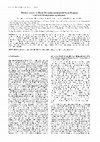
Geologica Belgica
The first ammonoids from the Lower Emsian (Devonian) of Belgium are described. They belong to the... more The first ammonoids from the Lower Emsian (Devonian) of Belgium are described. They belong to the Anetoceratinae, which show the most plesiomorphic characters of all ammonoids. This is the second report of Early Emsian ammonoids within the Rhenish facies of the Rhenish Slate Mountains (Belgium, Germany), in this case from the Belgian part of the Eifel (Burg Reuland). It highlights the possible importance of ammonoids for the correlation of the Emsian in its traditional German sense and the Emsian in the global sense as delimited by the GSSPs. Newly collected, age-significant brachiopods of the genera Arduspirifer and Euryspirifer and other previously reported fossils indicate a middle or late Early Emsian (Singhofen or Vallendar) age (in German sense) for this locality. We extend the range of Ivoites schindewolfi outside of the Hunsrück Basin and further corroborate an age younger than Ulmen for parts of the Hunsrück Slate.
We describe a small collection of ammonites from the Dababiya Quarry corehole. It is almost entir... more We describe a small collection of ammonites from the Dababiya Quarry corehole. It is almost entirely composed of heteromorph ammonites, in particular of scaphitids and baculitids. The presence of Indoscaphites pavana (Forbes 1848), which is for the first time reported from Egypt, points to a late to possibly latest Maastrichtian age for the interval DBD 80.36-DBD 99.11 of the Dababiya Quarry core. This is corroborated by preliminary data on planktonic foraminifera.
Aardkundige …, 2001
Vlaams Instituut voor de Zee. VLIZ. Informatie over marien en kustgebonden onderzoek & beleid in ... more Vlaams Instituut voor de Zee. VLIZ. Informatie over marien en kustgebonden onderzoek & beleid in Vlaanderen.
Supplementary data to: "<strong>Shell chemistry of the Boreal Campanian bivalve <em... more Supplementary data to: "<strong>Shell chemistry of the Boreal Campanian bivalve <em>Rastellum diluvianum</em> (Linnaeus, 1767) reveals temperature seasonality, growth rates and life cycle of an extinct Cretaceous oyster</strong>"

The study of the global mass extinction event at the Cretaceous–Palaeogene (K/Pg) boundary can ai... more The study of the global mass extinction event at the Cretaceous–Palaeogene (K/Pg) boundary can aid in understanding patterns of selective extinction and survival, and dynamics of ecosystem recovery. Outcrops in the Maastrichtian type area (southeast Netherlands, northeast Belgium) comprise an exceptionally expanded K/Pg boundary succession that offers a unique opportunity to study marine ecosystem recovery within the first thousands of years following the mass extinction event. A quantitative analyses was performed on systematically sampled macrofossils of the topmost Maastrichtian and lowermost Danian strata at the former Curfs-Ankerpoort quarry (Geulhem), which represent 'snapshots' of the latest Cretaceous and earliest Palaeogene marine ecosystems, respectively. Molluscs in particular are diverse and abundant in the studied succession. Regional ecosystem changes across the K/Pg boundary are relatively minor, showing a decline in suspension feeders, accompanied by an ecolo...
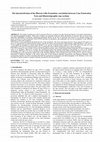
Geologica Belgica, 2020
The highly fossiliferous Lillo Formation (Pliocene, southern margin North Sea Basin) is formally ... more The highly fossiliferous Lillo Formation (Pliocene, southern margin North Sea Basin) is formally subdivided in five lithostratigraphical members. While these members are generally relatively easily identifiable in outcrops, they are much more difficultly identifiable in boreholes, hampering geological studies. In the Port of Antwerp area, however, an already existing and dense network of Cone Penetration Tests (CPTs) provides an alternative and additional tool for the recognition of the different lithologies in the Lillo Formation. CPTs reveal a clear geotechnical threefold division of the Formation. The lower and upper intervals, herein named CPT units Li-A and Li-C respectively, are characterized by high q(c) and low R-f values and correspond to shell-bearing, sandy lithologies. CPT unit Li-A can further be divided in a shelly basal subunit Li-Al and an overlying sandy subunit Li-A2. CPT units Li-A and Li-C are separated by CPT unit Li-B characterized by low q(c) and high R-f valu...
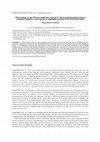
Geologica Belgica, 2020
1. Introduction The Antwerp harbour region (Belgium) is well known for its thick and fossil-rich ... more 1. Introduction The Antwerp harbour region (Belgium) is well known for its thick and fossil-rich Pliocene successions (e.g. Vervoenen, 1995; Marquet, 1998, 2002, 2004, 2005; Marquet et al., 2009; Duboys de Lavigerie et al., 2020; Tsai et al., 2020). To the east these units become thin and discontinuous and often are affected by decalcification and reworking and the stratigraphic subdivision is not well understood (Marquet, 1980; Bisconti & Bosselaers, 2020; Bosselaers et al., 2004). To the southeast of Antwerp a Pliocene fauna has been documented that has a specific taphonomic character and species composition (Marquet, 1980; Wesselingh in van Bakel et al., 2003). This so-called Broechem fauna is found in brown-reddish spherical sandstone nodules of up to circa 15 cm long, and is dominated by single and paired specimens of a number of large bivalve species, partially as moulds, including Cyrtodaria angusta, Arctica islandica, Acanthocardia aff. aculeata, Cardiidae indet. (sensu Wess...






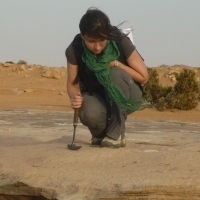


Uploads
Papers by Stijn Goolaerts